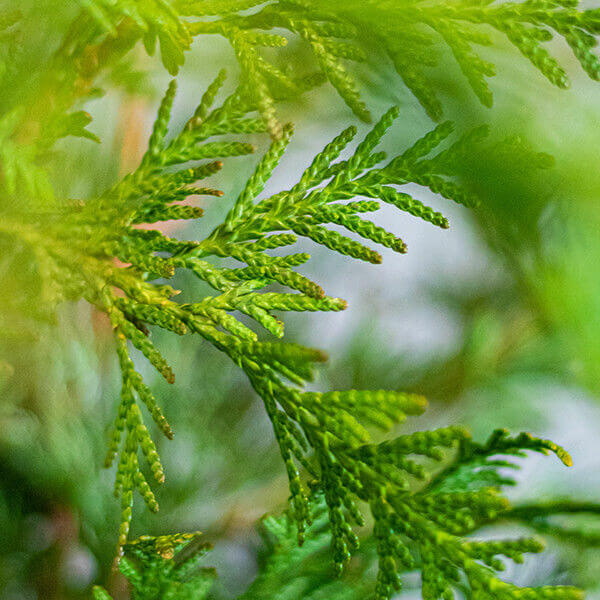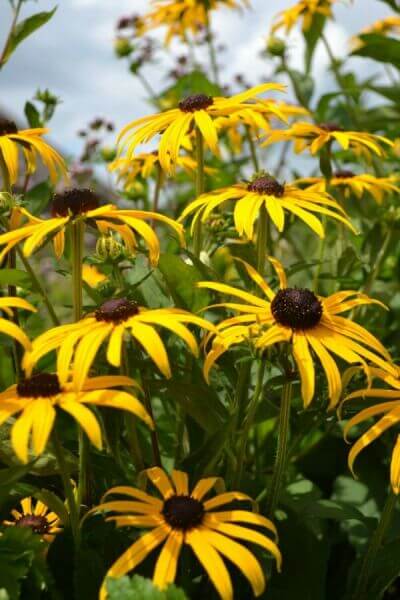Hedge Plants For Foliage Interest
Boost your garden's allure with lush hedge ranges such as Yew (Taxus), Thuja, Laurel, Photinia, and Bamboo, commemorated for their structural stability and environmental benefits.
Yew and Thuja supply evergreen protection and winter durability, while Laurel uses rapid growth and broad, aromatic leaves.
Photinia adds seasonal appeal with its lively red foliage, and Bamboo lends a low-maintenance, peaceful atmosphere.
These hedges enhance air quality, decrease sound, and develop tranquil, private spaces.
Appropriate planting, spacing, and upkeep ensure vigorous development and ecological harmony.
Check out how these lush varieties can elevate your garden's charm and wellness.
Secret Takeaways
Transform Your Garden With Lush Hedge Varieties
- Select Yew for its dense, evergreen growth and exceptional durability.
- Opt for Laurel for its fast growth and broad leaves, guaranteeing fast personal privacy.
- Pick Photinia for its lively seasonal foliage, which turns a striking dark red.
- Make use of Bamboo for a low-maintenance, winter-hardy hedge with visual appeal.
- Area plants 2-3 per meter and prune regularly for ideal development and health.
Popular Hedge Plants
When changing a garden with rich hedge ranges, it's vital to think about popular hedge plants such as Yew, Thuja, Laurel, and Photinia due to their special attributes and advantages.
Yew (Taxus) is extremely respected for its durability and thick, green development, making it a prime option for withstanding landscapes.
Thuja is noted for its evergreen foliage and robust winter durability.
Photinia adds seasonal vibrancy with red leaves that darken over time, creating dynamic visual appeal.
Laurel uses quick development and fragrant, broad leaves, suitable for quick privacy.
In Addition, Bamboo is an exceptional option for atmosphere, providing a low-maintenance, winter-hardy option that enhances the garden's visual with its sophisticated, swaying walking sticks.
These selections cater to a range of horticultural requirements and preferences.
Benefits of Garden Hedges
Garden hedges use a wide range of advantages, making them an important addition to any landscape. These natural barriers are cost-efficient to execute and offer significant wind security, improving air circulation and adding to noise reduction. The thick foliage of hedges like Thuja and Beech ensures personal privacy by obstructing visibility, developing a serene and secluded environment.
Hedges likewise play an important role in microclimate policy, supplying a stable environment that cultivates plant growth and decreases temperature changes. Their intricate leaf structures filter contaminants, enhancing air quality and contributing to a healthier garden environment.
Moreover, hedges master sound decrease, absorbing and deflecting sound waves to lower ambient sound levels. This dual performance of supplying both visual and acoustic privacy boosts the total tranquility and aesthetic appeal of any garden.
Planting and Upkeep Tips
For an effective hedge, careful preparation of the planting location is crucial. Guarantee the soil has appropriate pH and drain to support strong root advancement.
Area the plants properly for the picked species. Water the hedge frequently during its initial growth phase, adjusting as needed with seasonal changes.
Execute a methodical insect control and disease prevention technique, using chemical or organic treatments when necessary. Regularly inspect for aphids, mites, and fungal infections.
Apply mulch to maintain wetness and reduce weeds. Seasonal pruning promotes thick growth and air circulation, important for plant health.
Following these guidelines will assist you cultivate a lively, properly maintained hedge that enhances the beauty of your garden.
Spacing and Cutting Standards
Spacing and Cutting Guidelines
Proper spacing and cutting are important for cultivating healthy, visually appealing hedges. Adequate spacing makes sure each plant gets adequate nutrients, light, and airflow.
Follow these standards for ideal hedge maintenance:
- Spacing: Position hedge plants 2-3 plants per meter to encourage robust growth.
- Pruning Techniques: Routine pruning is vital for maintaining wanted hedge height and shape. Cut new development in summer and cut down older wood during winter season.
- Seasonal Care: Adjust cutting schedules and approaches according to seasonal requirements to make sure plant health.
- Hedge Height: Routinely display and trim to keep the desired hedge height and attain uniform looks.
Adhering to these actions will guarantee your hedge flourishes, boosting both the appeal and functionality of your garden.
Selecting the Right Hedge
Picking the Right Hedge
Choosing the proper hedge involves assessing aspects such as fully grown height, foliage density, and environmental durability. Effective hedge plant selection requires comprehending each types' growth characteristics and site-specific versatility.
For instance, Yew (Taxus) offers excellent longevity and thick development, while Thuja is significant for its winter season strength. Additionally, considering upkeep requirements is vital; fast-growing types like Laurel or Privet demand regular trimming, whereas low-maintenance options like Bamboo or Ivy might be more suitable for those looking for very little maintenance.
Ecological elements such as soil type, light accessibility, and wetness conditions must likewise direct the choice procedure. This cautious method guarantees the selected hedges will flourish, offering both aesthetic and functional advantages to the garden landscape.
Shipment and Planting Recommendations
To ensure your hedge plants flourish, they ought to be delivered by specialized carriers and planted without delay upon arrival.
Follow these vital steps for successful planting:
- Soil Preparation: Enrich the soil with raw material to enhance drainage and nutrient material.
- Planting Depth: Develop a trench twice the width and equal to the depth of the root ball.
- Watering Strategies: Water completely after planting, keeping the soil consistently wet however not saturated.
- Mulching: Use a layer of mulch to keep moisture and reduce weeds.
Client Support and Service
Offered the essential role of prompt assistance in horticultural pursuits, our consumer support group is offered six days a week through telephone, e-mail, and social media to use expert suggestions and quickly resolve any issues. Their commitment to quick action times guarantees customer fulfillment by fixing queries associated with plant health, optimal planting techniques, and upkeep schedules.

----------------------
Telephone
Within 24 hours
This comprehensive support group, strengthened by a stellar 9.3/ 10 consumer score, highlights our commitment to boosting the gardening experience for each client.
Regularly Asked Questions
The Length Of Time Does It Take for Hedge Plants to Develop?
Hedge plants typically need one to three years to end up being fully developed, with the exact period differing by species and growing conditions.
Reliable care during this vital period is vital for robust development. Consistent watering, alert weed control, and appropriate fertilizer application are critical in promoting strong root advancement.
For example, fast-growing species like Laurel might establish more quickly, while slower-growing ranges such as Yew may take longer. Diligent upkeep speeds up the facility process, resulting in thick and healthy hedges.
What Are the Best Hedge Plants for Privacy?
The concern of the finest hedge plants for personal privacy involves assessing evergreen and deciduous choices.
Evergreen hedges like Thuja, Laurel, and Cypress supply year-round protection, ensuring continuous privacy.
On the other hand, deciduous hedges such as Beech use seasonal personal privacy, shedding leaves in cooler months.
Secret maintenance suggestions for personal privacy hedges consist of routine cutting, fertilizing in spring, and correct spacing-- typically 2 to 3 plants per meter.
Additionally, consistent watering and diligent weed removal are crucial for promoting healthy, dense growth.
Can Hedge Plants Draw In Wildlife to My Garden?
Yes, hedge plants can draw in wildlife to your garden by offering important benefits like shelter, food, and nesting sites, thereby enhancing regional biodiversity. For instance, yew, holly, and laurel are exceptional for bring in birds, while ivy supports a range of bugs.
Nevertheless, it is essential to note that there are some drawbacks, such as increased upkeep to handle insects and regular maintenance. Thoroughly selecting and maintaining hedge ranges can help balance these advantages and disadvantages, ultimately fostering a lively and sustainable ecosystem in your garden.
Exist Any Flowering Hedge Plants Available?
Yes, there are flowering hedge plants readily available that can improve the beauty of your garden.
For instance, Elaeagnus, also called Olive Willow, produces fragrant white flowers in the fall, including a touch of elegance.
Photinia, another popular option, showcases vibrant red leaves that grow into a rich green, creating a dynamic visual effect throughout the seasons.
To guarantee these plants thrive, it's vital to practice proper pruning methods and seasonal maintenance, such as cutting new growth in the summer season and cutting back in the winter season.
These measures will assist keep the health and aesthetic appeal of your blooming hedges.
How Do I Avoid Pests in My Hedge Plants?
To prevent bugs in hedge plants, employ natural insect control approaches and maintain appropriate hedge care. Present beneficial bugs like ladybugs, which victimize damaging pests, to produce a well balanced environment.
Regularly inspect your hedges for signs of invasion and promptly remove any affected parts to prevent the spread. Guarantee the health check here of your hedges by using well balanced fertilizers and supplying appropriate water.
Make use of mulching to retain soil moisture and appropriate spacing to decrease plant tension and promote robust development. These practices jointly assist in decreasing bug concerns and keeping a healthy hedge.
Conclusion
In essence, picking the ideal hedge ranges such as Yew, Thuja, and Laurel can change any garden into a relaxing sanctuary. These plants offer year-round greenery, enhance aesthetic appeal, and deal useful advantages like noise reduction and wind protection.
Proper planting strategies, precise spacing, constant watering, and seasonal trimming are vital for optimal growth.
Reliable shipment services and skilled client support make sure a smooth experience from purchase to planting, making it simpler than ever to raise your outside space.
Garden hedges use a wide variety of benefits, making them an important addition to any landscape. These natural barriers are cost-efficient to execute and provide substantial wind protection, boosting air flow and contributing to noise decrease. The dense foliage of hedges like Thuja and Beech makes sure privacy by blocking visibility, developing a peaceful and remote environment.

Pruning Methods: Regular pruning is important for maintaining wanted hedge height and shape. Cut brand-new growth in summer and cut back older wood during winter season.
Comments on “Best Hedge Plants For Small Spaces”